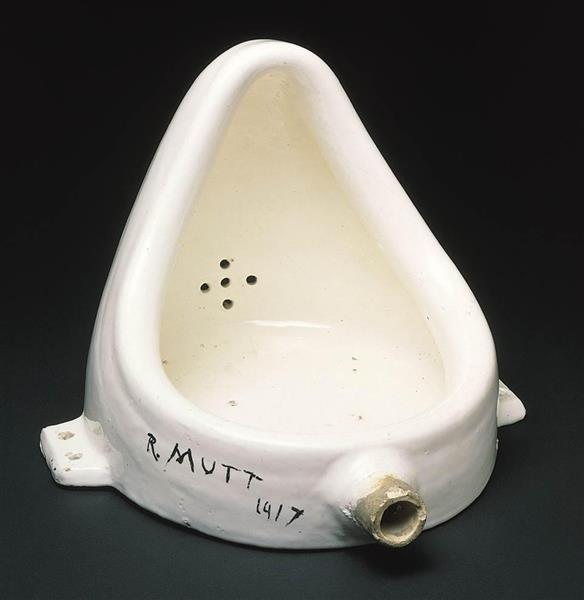
Dada
Art movement
Dada (/ˈdɑːdɑː/) or Dadaism was an art movement of the European avant-garde in the early 20th century, with early centers in Zürich, Switzerland at the Cabaret Voltaire (circa 1916); New York Dada began circa 1915, and after 1920 Dada flourished in Paris. Developed in reaction to World War I, the Dada movement consisted of artists who rejected the logic, reason, and aestheticism of modern capitalist society, instead expressing nonsense, irrationality, and anti-bourgeois protest in their works. The art of the movement spanned visual, literary, and sound media, including collage, sound poetry, cut-up writing, and sculpture. Dadaist artists expressed their discontent with violence, war, and nationalism, and maintained political affinities with the radical left.
There is no consensus on the origin of the movement's name; a common story is that the Austrian artist Richard Huelsenbeck plunged a knife at random into a dictionary, where it landed on "dada", a colloquial French term for a hobby horse. Others note that it suggests the first words of a child, evoking a childishness and absurdity that appealed to the group. Still others speculate that the word might have been chosen to evoke a similar meaning (or no meaning at all) in any language, reflecting the movement's internationalism.
The roots of Dada lay in pre-war avant-garde. The term anti-art, a precursor to Dada, was coined by Marcel Duchamp around 1913 to characterize works which challenge accepted definitions of art. Cubism and the development of collage and abstract art would inform the movement's detachment from the constraints of reality and convention. The work of French poets, Italian Futurists and the German Expressionists would influence Dada's rejection of the tight correlation between words and meaning. Works such as Ubu Roi (1896) by Alfred Jarry, and the ballet Parade (1916–17) by Erik Satie would also be characterized as proto-Dadaist works. The Dada movement's principles were first collected in Hugo Ball's Dada Manifesto in 1916.
The Dadaist movement included public gatherings, demonstrations, and publication of art/literary journals; passionate coverage of art, politics, and culture were topics often discussed in a variety of media. Key figures in the movement included Hugo Ball, Marcel Duchamp, Emmy Hennings, Hans Arp, Raoul Hausmann, Hannah Höch, Johannes Baader, Tristan Tzara, Francis Picabia, Huelsenbeck, George Grosz, John Heartfield, Man Ray, Beatrice Wood, Kurt Schwitters, Hans Richter, and Max Ernst, among others. The movement influenced later styles like the avant-garde and downtown music movements, and groups including surrealism, Nouveau Réalisme, pop art and Fluxus.
Dada was an informal international movement, with participants in Europe and North America. The beginnings of Dada correspond to the outbreak of World War I. For many participants, the movement was a protest against the bourgeois nationalist and colonialist interests, which many Dadaists believed were the root cause of the war, and against the cultural and intellectual conformity—in art and more broadly in society—that corresponded to the war.
Avant-garde circles outside France knew of pre-war Parisian developments. They had seen (or participated in) Cubist exhibitions held at Galeries Dalmau, Barcelona (1912), Galerie Der Sturm in Berlin (1912), the Armory Show in New York (1913), SVU Mánes in Prague (1914), several Jack of Diamonds exhibitions in Moscow and at De Moderne Kunstkring, Amsterdam (between 1911 and 1915). Futurism developed in response to the work of various artists. Dada subsequently combined these approaches.
This is a part of the Wikipedia article used under the Creative Commons Attribution-Sharealike 3.0 Unported License (CC-BY-SA). The full text of the article is here →
Wikipedia: https://en.wikipedia.org/wiki/Dada


